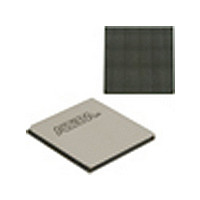EP4SGX530HH35C2N Altera, EP4SGX530HH35C2N Datasheet - Page 50

EP4SGX530HH35C2N
Manufacturer Part Number
EP4SGX530HH35C2N
Description
IC STRATIX IV FPGA 530K 1152HBGA
Manufacturer
Altera
Series
Stratix® IV GXr
Datasheets
1.EP4SGX110DF29C3N.pdf
(80 pages)
2.EP4SGX110DF29C3N.pdf
(1154 pages)
3.EP4SGX110DF29C3N.pdf
(432 pages)
4.EP4SGX110DF29C3N.pdf
(22 pages)
5.EP4SGX110DF29C3N.pdf
(30 pages)
6.EP4SGX110DF29C3N.pdf
(72 pages)
7.EP4SGX530HH35C2N.pdf
(1145 pages)
Specifications of EP4SGX530HH35C2N
Number Of Logic Elements/cells
531200
Number Of Labs/clbs
21248
Total Ram Bits
27376
Number Of I /o
564
Voltage - Supply
0.87 V ~ 0.93 V
Mounting Type
Surface Mount
Operating Temperature
0°C ~ 85°C
Package / Case
1152-HBGA
Family Name
Stratix® IV
Number Of Logic Blocks/elements
531200
# Registers
424960
# I/os (max)
560
Process Technology
40nm
Operating Supply Voltage (typ)
900mV
Logic Cells
531200
Ram Bits
28033024
Operating Supply Voltage (min)
0.87V
Operating Supply Voltage (max)
0.93V
Operating Temp Range
0C to 85C
Operating Temperature Classification
Commercial
Mounting
Surface Mount
Pin Count
1152
Package Type
FCHBGA
Lead Free Status / RoHS Status
Lead free / RoHS Compliant
Number Of Gates
-
Lead Free Status / Rohs Status
Compliant
Available stocks
Company
Part Number
Manufacturer
Quantity
Price
- EP4SGX110DF29C3N PDF datasheet
- EP4SGX110DF29C3N PDF datasheet #2
- EP4SGX110DF29C3N PDF datasheet #3
- EP4SGX110DF29C3N PDF datasheet #4
- EP4SGX110DF29C3N PDF datasheet #5
- EP4SGX110DF29C3N PDF datasheet #6
- EP4SGX530HH35C2N PDF datasheet #7
- Current page: 50 of 432
- Download datasheet (11Mb)
2–14
Figure 2–11. ALM in Shared Arithmetic Mode
Stratix IV Device Handbook Volume 1
datae0
datae1
datab
dataa
datad
datac
Shared Arithmetic Mode
In shared arithmetic mode, the ALM can implement a three-input add within the
ALM. In this mode, the ALM is configured with 4 four-input LUTs. Each LUT either
computes the sum of three inputs or the carry of three inputs. The output of the carry
computation is fed to the next adder (either to adder1 in the same ALM or to adder0 of
the next ALM in the LAB) using a dedicated connection called the shared arithmetic
chain. This shared arithmetic chain can significantly improve the performance of an
adder tree by reducing the number of summation stages required to implement an
adder tree.
You can find adder trees in many different applications. For example, the summation
of the partial products in a logic-based multiplier can be implemented in a tree
structure. Another example is a correlator function that can use a large adder tree to
sum filtered data samples in a given time frame to recover or de-spread data that was
transmitted using spread-spectrum technology.
Shared Arithmetic Chain
The shared arithmetic chain available in enhanced arithmetic mode allows the ALM
to implement a three-input add. This significantly reduces the resources necessary to
implement large adder trees or correlator functions.
Shared arithmetic chains can begin in either the first or sixth ALM in the LAB. The
Quartus II Compiler creates shared arithmetic chains longer than 20 (10 ALMs in
arithmetic or shared arithmetic mode) by linking LABs together automatically. For
enhanced fitting, a long shared arithmetic chain runs vertically, allowing fast
horizontal connections to the TriMatrix memory and DSP blocks. A shared arithmetic
chain can continue as far as a full column.
Figure 2–11
4-Input
4-Input
4-Input
4-Input
LUT
LUT
LUT
LUT
shared_arith_out
shows the ALM using this feature.
shared_arith_in
Chapter 2: Logic Array Blocks and Adaptive Logic Modules in Stratix IV Devices
carry_out
carry_in
labclk
D
D
reg0
reg1
Q
Q
To general or
To general or
To general or
To general or
local routing
local routing
local routing
local routing
February 2011 Altera Corporation
Adaptive Logic Modules
Related parts for EP4SGX530HH35C2N
Image
Part Number
Description
Manufacturer
Datasheet
Request
R

Part Number:
Description:
CYCLONE II STARTER KIT EP2C20N
Manufacturer:
Altera
Datasheet:

Part Number:
Description:
CPLD, EP610 Family, ECMOS Process, 300 Gates, 16 Macro Cells, 16 Reg., 16 User I/Os, 5V Supply, 35 Speed Grade, 24DIP
Manufacturer:
Altera Corporation
Datasheet:

Part Number:
Description:
CPLD, EP610 Family, ECMOS Process, 300 Gates, 16 Macro Cells, 16 Reg., 16 User I/Os, 5V Supply, 15 Speed Grade, 24DIP
Manufacturer:
Altera Corporation
Datasheet:

Part Number:
Description:
Manufacturer:
Altera Corporation
Datasheet:

Part Number:
Description:
CPLD, EP610 Family, ECMOS Process, 300 Gates, 16 Macro Cells, 16 Reg., 16 User I/Os, 5V Supply, 30 Speed Grade, 24DIP
Manufacturer:
Altera Corporation
Datasheet:

Part Number:
Description:
High-performance, low-power erasable programmable logic devices with 8 macrocells, 10ns
Manufacturer:
Altera Corporation
Datasheet:

Part Number:
Description:
High-performance, low-power erasable programmable logic devices with 8 macrocells, 7ns
Manufacturer:
Altera Corporation
Datasheet:

Part Number:
Description:
Classic EPLD
Manufacturer:
Altera Corporation
Datasheet:

Part Number:
Description:
High-performance, low-power erasable programmable logic devices with 8 macrocells, 10ns
Manufacturer:
Altera Corporation
Datasheet:

Part Number:
Description:
Manufacturer:
Altera Corporation
Datasheet:

Part Number:
Description:
Manufacturer:
Altera Corporation
Datasheet:

Part Number:
Description:
Manufacturer:
Altera Corporation
Datasheet:

Part Number:
Description:
CPLD, EP610 Family, ECMOS Process, 300 Gates, 16 Macro Cells, 16 Reg., 16 User I/Os, 5V Supply, 25 Speed Grade, 24DIP
Manufacturer:
Altera Corporation
Datasheet:












